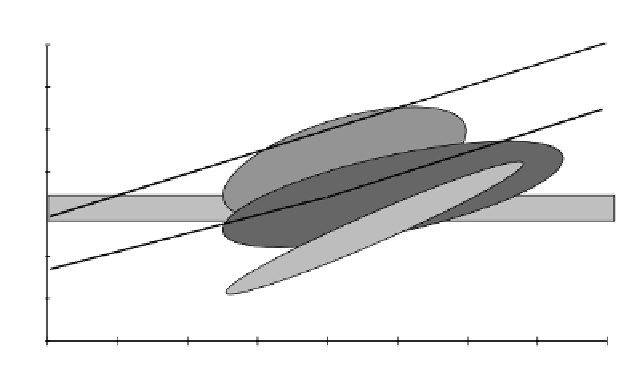Environmental Engineering Reference
In-Depth Information
Source:
Birch, 2000
Figure 10.7
Development of combustor technology
reduction in NO
x
relative to CAEP 2 requirements. More radical research programmes
in the US are aimed at ultra-low NO
x
technology, with targets of a reduction of 70
per cent relative to CAEP 2 requirements.
A new concern that has only recently come to the attention of the industry is the
effect of engine exhaust plumes (water vapour, soot and SO
2
) at altitude and, specif-
ically, their ability to form contrails that can, given particular atmospheric conditions,
form persistent cirrus clouds. Currently, research is being carried out to identify the
mechanisms for contrail formation and to determine their environmental impact.
The results of this research will feed back into engine and airframe design consider-
ations for future developments.
Airframe
Evolutionary improvements to the airframe can be separated into derivatives of exist-
ing features and new developments (but which could still be applied to the conven-
tional airframe shape).
Laminar flow
Achieving laminar flow over the whole of an aircraft frame is extremely difficult, and
passive control concepts, such as slotted aerofoils, suction and actively heated/cooled
surfaces, are currently being explored. The potential for laminar flow to reduce drag
is considerable and is estimated to be up to 80 per cent for long-range aircraft (Poll,
2000, p322), giving a factor of between two and three in specific air range. However,
some of the benefits from this will be outweighed by increasing weight and power off-
take requirements, needed to drive the suction system. While the concept is sound,
some issues need to be considered. The application of laminar flow techniques may lead
to an increase in the fuel reserve needed for long-range aircraft in order to counter












































































